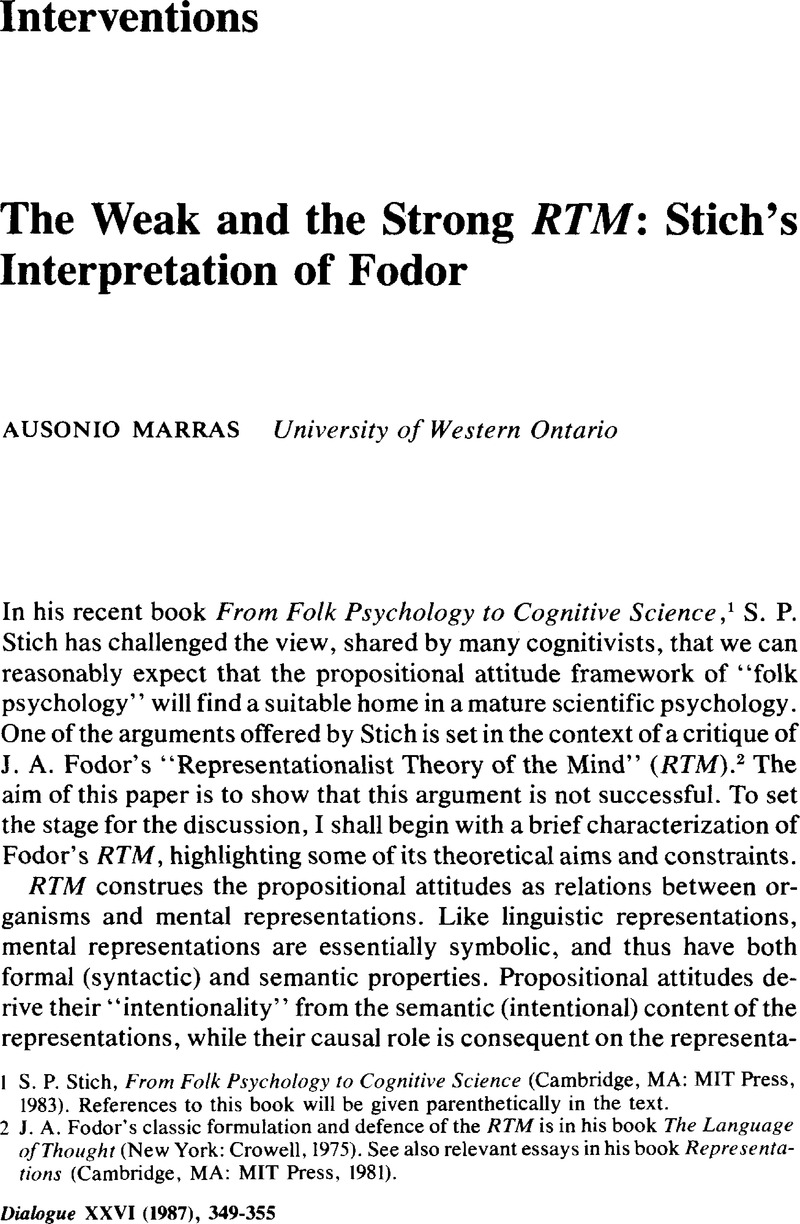No CrossRef data available.
Published online by Cambridge University Press: 13 April 2010

1 Stich, S. P., From Folk Psychology to Cognitive Science (Cambridge, MA: MIT Press, 1983). References to this book will be given parenthetically in the textGoogle Scholar.
2 Fodor's, J. A. classic formulation and defence of the RTM is in his book The Language of Thought (New York: Crowell, 1975)Google Scholar. See also relevant essays in his book Representations (Cambridge, MA: MIT Press, 1981)Google Scholar.
3 See J. A. Fodor, “Methodological Solipsism Considered as a Research Strategy in Cognitive Psychology”, in Representations.
4 In referring to the RTM I shall henceforth be referring to the computational form of the theory.
5 On the STM, see my Critical Notice of Stich's, book in Philosophy of Science 54 (1987)Google Scholar.
6 See J. A. Fodor, “Special Sciences”, in Representations.
7 I am grateful to Jerry Fodor and William Demopoulos for their helpful comments. I am also grateful to the Social Sciences and Humanities Research Council of Canada for support in this research.